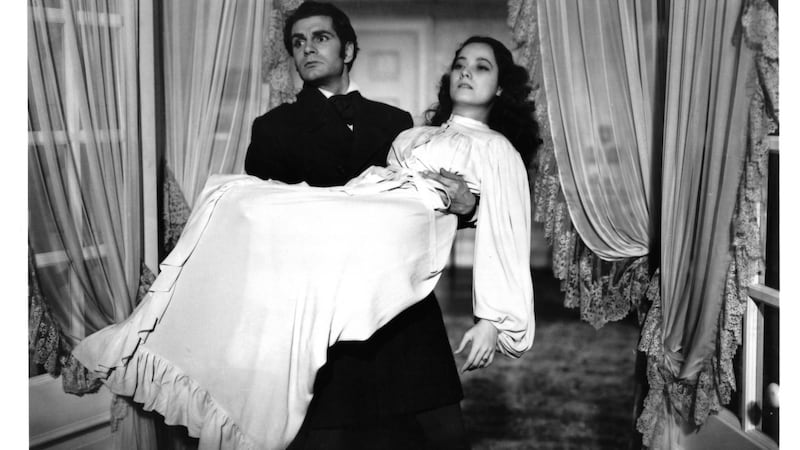Reactionary blowhards will blow hard, but greater concern about racial sensitivity has made the world a better place. That noted, two recent incidents, one the subject of online wrath, the other largely unnoticed, do confirm what an uneasy mess such efforts can generate.
Consider reaction to the casting news for Emerald Fennell’s take on Wuthering Heights. Not everyone is happy with the notion of Margot Robbie as Cathy and Jacob Elordi as Heathcliff. Faithfulness to the text is not a virtue in itself, but, if the director of Saltburn really is trying to re-create the characters in Emily Brontë’s book then she should have gone a little less shiny and a little less Australian (also, ungallant though it may be to say so, a tiny bit younger). David Cecil’s famous description of the lovers as “children of the storm” doesn’t really cover those two idols.
It is, however, something else that has really got the internet in a fury. In recent years there has been much discussion about Heathcliff’s ethnicity. The vast majority of actors cast in the role have been white: Laurence Olivier, Richard Burton, Timothy Dalton, Cliff Richard (no, really). Yet the text boils with something like racial othering. Heathcliff is described as “a dark-skinned gypsy” and compared to a “lascar”, a word for an Indian or Asian sailor. One might counter that elsewhere his face is “as white as the wall behind him”, but it remains reasonable to admit the possibility that Heathcliff was a person of colour.
Preparing her innovative, underappreciated 2011 adaptation, Andrea Arnold initially looked for an actor from the UK’s Romani community but eventually settled on a black performer named James Howson. Though the reactionary blowhards hadn’t yet fastened on to the word “woke”, they had “PC gone mad” to throw back in the film-makers’ faces. Counterarguments quoted the references above and convinced the open-minded that such an interpretation was reasonable.
READ MORE
A decade is a long time in discourse. The online response this week confirmed that a large swathe of the commentariat has moved from allowing the possibility that Heathcliff is black to an assertion that he is, to quote one X user, “canonically Bipoc” (which stands for black, indigenous and person of colour). Heathcliff “is described as a black/mixed race man”, someone else overclaimed. There was a lot more where that came from. Heathcliff is, it seems, now as black as Othello. Olivier playing Brontë’s creation in 1939 is, perhaps, no less a transgression than his blacking up for Shakespeare’s “Moor” in 1965. How did that happen?

Speaking of blacking up, while Fennell (whose comfortable upbringing contributes to the demented levels of hostility ranged against her) was deciding on her cast, a controversy of nearly a half-century’s duration was quietly playing to something like a finishing point. Even in 1977, when Joni Mitchell released her wild, experimental album Don Juan’s Reckless Daughter, there was some unease about her blacking up to portray a pimp figure on the cover.
Many never realised the apparently male character was her. A year before the release of the album, she had, when considering a Halloween costume, noticed this “black guy with a beautiful spirit walking with a bop”. Mitchell was taken over. “It was as if this spirit went into me. So I started walking like him,” she said. Later she attended her Halloween party in blackface as a character named Art Nouveau.
All of this sounds distinctly dubious now. But changing an album cover is not like changing the cover of a book. Sgt Pepper will always have Peter Blake’s celebrity tableau. Joy Division’s Unknown Pleasures will forever journey under Peter Saville’s data plot. For decades, as sensitivity about blackface rose, it looked as if Mitchell and her record company were holding the same view of Don Juan. This spring, with no announcement and no further debate, the cover was switched on streaming services for one featuring an image from a later photoshoot. The vinyl edition sold on Amazon now also features the new cover.
Does this matter? Not much. It does not compare with the proposal, since rowed back somewhat, that the only published editions of Roald Dahl’s works would be crudely bowdlerised. But it does feel as if the album is not quite all there any more. The sleeve is (or was) part of the creative package. Could we not just append a message acknowledging the potential offence? It seemed to work for the episode of Mad Men featuring blackface.
It would be a more boring world if we were all in agreement. And we are better off leaning into oversensitivity than blithely accepting discriminatory representation. But let us at least admit ambiguity into the conversation. Heathcliff could well have been Irish. He was found in Liverpool, you know.
















